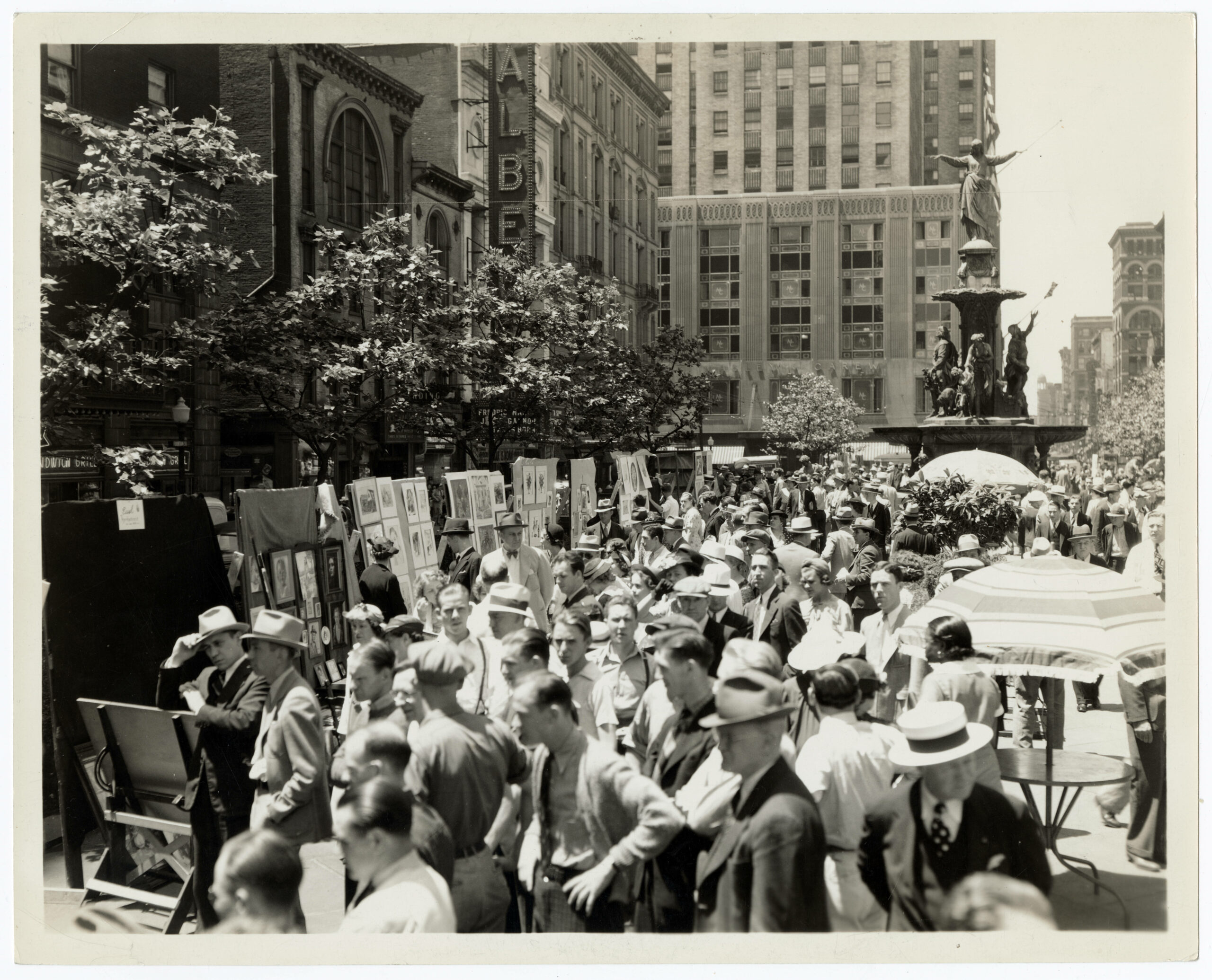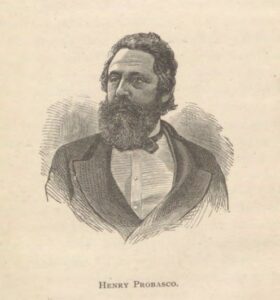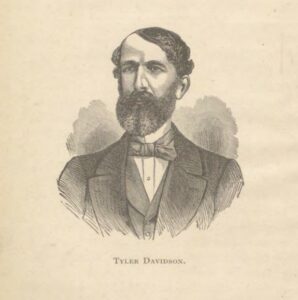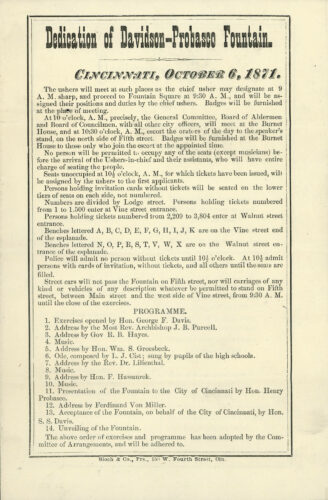Cincinnati’s Tyler Davidson Fountain: “The Genius of Water”

If you have ever been in downtown Cincinnati, chances are you have seen the beautiful fountain, the Tyler Davidson Fountain, otherwise known as “The Genius of Water.” Located at the intersection of East 5th and Vine Streets in the business district of Cincinnati, Ohio, Henry Probasco commissioned and donated this fountain “to the people of Cincinnati” in memory of his business partner and brother-in-law, Tyler Davidson.

Henry Probasco and his family moved to Cincinnati from Philadelphia, Pennsylvania in the early 1830s. Henry’s father, Peter, worked for E.F. Seybold and Company, which was a hardware merchant and manufacturer. In 1835, Henry began working for Tyler Davidson as a clerk in a hardware store, and by 1840 was a partner in the company. In 1840 Henry also married Julia Carrington, the half-sister of Tyler Davidson. Throughout their time working together, Henry Probasco and Tyler Davidson grew the business to become the top hardware business in Cincinnati. They had discussed the possibility of building a public fountain for the city after trips abroad to Europe and visiting the beautiful fountains. The idea was put on hold with the start of the Civil War in 1861, and then sadly, after the war ended, Tyler Davidson died in December of 1865.

The following year, in 1866, Henry Probasco sold the company to an existing partner, Lowry, Perin & Company. Henry decided to carry out the vision he and Tyler shared from years before and he began traveling around Europe to select a model for the fountain. He was frustrated by the similarity of many designs, depicting water nymphs, Neptune, Tritons, and what he considered “trite emblems of heathen mythology”. While visiting the Royal Bronze Factory in Munich, Henry described the type of fountain he was looking for to Ferdinand von Miller, the director of the foundry, and was shown a sketch from some years before by August von Kreling. It was exactly what he was looking for. The design depicted the Genius of Water at the top, bestowing her blessing on the people below that represented the various practical uses of water, while the four boys on the drinking fountains around the edge of the basin represent the pleasures of water.
When Henry returned to Ohio, he began working on getting the fountain approved. He wrote a letter to Charles F. Wilstach, the mayor of Cincinnati, in February of 1867. In the letter he describes the fountain as a “representation of the blessings and benefits of water” and declares he will cover the expenses until the fountain is completed, in use, and accepted by the city, with a few stipulations.
- The city must maintain and provide pure water for free.
- The fountain must be on a certain number of hours during the day except when temperatures are below freezing.
- A city employee will be stationed to keep the fountain safe from damage and clean, and to protect the users.
- The fountain should only be used for drinking except in the case of a fire.

The mayor and city council approved the fountain and the conditions in March of 1867. It was estimated to be completed in three years but took a little longer due to adjustments and changes to the design. In October 1871 the fountain was completed, and the city hosted a dedication and unveiling ceremony. The fountain was seen as a representation of the values of temperance and the good will of the elite of the city. It became a hub of activity that saw hundreds of visitors each day pass through to refresh themselves from the cool water and socialize with the community.
After 150 years, you can still take a stroll through downtown Cincinnati and see the beauty and wonder of a memorial that remains a part of the city’s artistic and social environment. Music and art festivals, markets, movies, and special events still bring people together in this central location. The fountain usually operates the Saturday before the Major League Baseball season begins until late November or early December, depending on the temperature. Of course, while you’re there, don’t forget what the original purpose was, and fill your water bottle for free!
Thank you to Ashely Rodriguez for this week’s post! Ashely is a graduate student at Kent State University and is completing a practicum in the Research & Catalog Services department of the State Library of Ohio. She is interested in working with special collections and archives.



Leave a Reply
You must be logged in to post a comment.